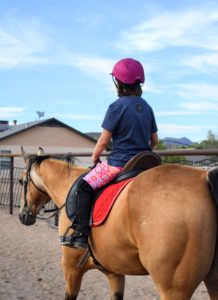Do you have a weight limit policy in your adaptive riding** program?
If you do….
- Is it working well? Do you stick to it?
- Is it not working well?
- Is something just not right?
- Do you have a policy but still make exceptions to the rules?
If you don’t….
- Do you feel that you don’t serve enough students to need one?
- Do you not know where to start when it comes to setting a weight limit?
- Do you have students who would probably be over the weight limit policy you want to put into place so you are holding off on enforcing one?
Why are weight limits and a policy to back them important?
Having a clear, concise weight limit policy benefits adaptive riding programs of every size and shape….from a large high volume EAAT ‘center’ with participant numbers in the triple digits to a smaller, private program with just a handful of students. I also think that weight limit polices should applly to traditional riding programs as well!
Often times we think that weight limit policies are mostly there to help protect our equine coworkers and help them have happy, healthy, long careers. However, weight limits also critical in maintaining the safety of the students, volunteers, and instructors!
Click Here for TWO Free Downloads!
This download includes: Sample Weight Limit Policy and a Template for a Herd Crucial Information Chart that gives an easy to read and post document you can post in easy to access places.
How do you set weight limits?
 This is where it gets a little tricky.
This is where it gets a little tricky.
The commonly accepted ‘rule’ is that horses can carry 20% of their body weight…..but that is just a starting point. Did you know that the 20% rule is rider weight PLUS tack and equipment?
But the 20% rule is just a starting point and does not give specific values to subtract for the many factors that impact our horses:
- Horse related factors that impact what a horse can carry:
- Height and weight
- Light or heavy bones
- Strength of the loin and other conformation factors
- Age
- Fitness
- Natural inclination of self-carriage
- Health issues (arthritis, cushings, etc)
- Equipment related factors
- Size of the saddle that fits the horse (if the person is too big for the saddle it can cause discomfort to the horse
- Saddle vs. Bareback (Michelle LaFleur has a great presentation in The Intuitive Instructor Club on this topic!)
- Rider related factors
- Height of the rider (the longer the torso the more the horse feels when the person is off balance or moves the upper body….like a lever)
- Weight of the rider
Build of the rider (Jenny Nell Hartung does a great presentation on matching horses and riders based of human build that is available in the IIC) - Physical ability of the rider- can they move with the horse and control their body
- Supporting Human Factors
- Ability of the instructor (height, weight, physical ability)
- Ability of the volunteers (height, weight, physical ability)
- External related factors
- Location of the ride (sandy, flat, inclines, etc)
- Weather (hot, cold, humid)
- And many other pieces that can factor in to the horse’s weight limit.
Drop a comment at the bottom of this post if there is a factor you consider when setting a horse’s weight limit.
All the pieces above are exactly why things can get tricky when trying to come up with a weight limit for each horse and adjusting that weigh limit over time.
Is 20% really the best rule of thumb?

I won’t go into great detail because it’s detailed in this PILOT RESEARCH STUDY, but there were some interesting results that show that 20% may be too much even when professional riders are paired with well-conditioned horses wearing saddles fit by a master saddle fitter.
The two main points that stood out to me:
- “We have documented a substantial temporary adverse effect of rider on gait and behaviour, with no test being completed by the H or VH riders. The two factors that are most likely to underlie this finding are: (i) rider weight as a proportion of horse weight; (ii) rider position in the saddle/on the horse’s back (which is a function of rider size).” (1)
- “All rider VH tests (n = 7) were abandoned because of lameness. Five rider H tests were abandoned for lameness and one was stopped because the horse demonstrated 10/24 behavioural markers in canter. ” (1)
Read the study! If you need “numbers” to back up why you need to set a weight limit policy….or lower your current weight limit policy this could be your backing. There are also multiple other studies linked in this article that would be a great read.
Tips and Solutions for the Weight Limit Conundrum
I can’t give you a specific formula to use. I wish I could but there are just too many factors that come into play. Your situation is different than mine based off the many factors listed above (horses, volunteers, instructors, student)
So instead of a black and white answer, here are a few tips and suggestions when it comes to setting, or refining, the weight limit policy and weight limits for your equines.
- Have two different weight limits (for each horse) to address the different range of students you may serve.
- Balanced and/or independent Rider- This may be a rider who does not need significant assistance mounting or dismounting. Who does not need physical assistance during an emergency dismount….or who may not be able to do a clean emergency dismount but is able to consent to the risk riding independently and of hitting the dirt in an emergency. This is also an individual who is able to control their body in relation to the horse and stays fairly well balanced a majority of the ride.
- Unbalanced and/or Supported Rider- This may be a rider who needs significant support during mounting and dismounting. Who needs support to stay in position on the horse during the ride and/or physical assistance to adjust and recenter. They may also need physical assistance during an emergency dismount and/or may not be able to consent to the risk of riding more independently and understand the possibility of hitting the dirt.
- Have a written and well advertised weight limit policy for the center’s different mounted activities and therapies offered and also individual weight limits for the horses
- Stick to your weight limit policy for the center and for each equine.
- If the weight limit for Dunny is 175 it’s 175…not 176 or 177 “because their rider is so close”. If you budge for one person it sets you up for a whole host of problems.
- Sticking to the policy makes things so much easier and it is ‘fair’ for everyone because there are no exceptions “because so and so (fill in the blank)”.
- Have a plan for how to maintain the weight limit policy
- I will talk about a Weigh-In Policy in a separate post. Routine weigh-ins can help maintain the integrity and consistency of your weight limit policy.
- Resources:
- (1)- Dyson, S. , Ellis, A. D., Mackechnie‐Guire, R. , Douglas, J. , Bondi, A. and Harris, P. (2019), The influence of rider:horse bodyweight ratio and rider‐horse‐saddle fit on equine gait and behaviour: A pilot study. Equine Vet Educ. doi:10.1111/eve.13085
Watch the Replay of our Instructor Chat on Weight Limits and Weigh-Ins
Get Your TWO FREE Downloads!
Enter your email below to get these Two FREE Downloads sent straight to your inbox:
Sample Weight Limit Policy
Template for Herd Crucial Information Chart
(A great way to track and post each equine's weight limit)
I promise not to spam you with emails! The information you put in stays with Hoof Falls & Footfalls.
This is a handy way for me to track what downloads are the most popular and the topics fellow instructors want resources for!
Thank you!
You have successfully joined our subscriber list.

** I personally chose to use the term Adaptive Riding vs. Therapeutic Riding and avoid ‘horse therapy’ at all costs. Why? CLICK HERE. The thoughts shared in the post above apply to not only Adaptive riding but also to other mounted equine activities and therapies offered at an EAAT (Equine Assisted Activity and Therapy) Program/Center/Barn.


